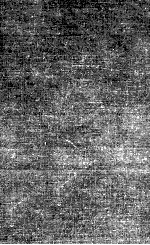图书介绍
Methods of Forensic Science Volume IIPDF|Epub|txt|kindle电子书版本网盘下载

- Frank Lundquist 著
- 出版社: Ltd.
- ISBN:
- 出版时间:1963
- 标注页数:302页
- 文件大小:65MB
- 文件页数:316页
- 主题词:
PDF下载
下载说明
Methods of Forensic Science Volume IIPDF格式电子书版下载
下载的文件为RAR压缩包。需要使用解压软件进行解压得到PDF格式图书。建议使用BT下载工具Free Download Manager进行下载,简称FDM(免费,没有广告,支持多平台)。本站资源全部打包为BT种子。所以需要使用专业的BT下载软件进行下载。如BitComet qBittorrent uTorrent等BT下载工具。迅雷目前由于本站不是热门资源。不推荐使用!后期资源热门了。安装了迅雷也可以迅雷进行下载!
(文件页数 要大于 标注页数,上中下等多册电子书除外)
注意:本站所有压缩包均有解压码: 点击下载压缩包解压工具
图书目录
An Analytical Technique for Determining the Origin of Unidentified Paper&By E.MARTIN1
Ⅰ.Introduction1
Ⅱ.Test Methods for Paper Analysis and Test Results2
General Observations2
1.Quantity,Condition and Preparation of Paper for Testing4
2.Determining the Weight per Square Metre5
3.Measurement of Thickness7
4.Macroscopical Examination of the Paper Surface8
5.Determination of Sizing and Content of Mechanical Wood Pulp8
6.Determination of Ash Residue9
7.Microscopical Examination of Paper Substance10
8.Determination of the Degree of Beating and Quantity of Fibres15
9.Spectrographic Analysis of Inorganic Substances in Paper17
10.Chromatographic Determination of the Alkali Metals and Alkaline Earth Metals in Paper19
Ⅲ.Chromatographic Examination of Paper Fibres for possible Changes due to Printing Inks,Solvents used as Ink Vehicles,Surface Sizing,etc.25
Ⅳ.Investigation of the Relationship between the Inos in Paper and the Nature of the Water uses in Manufacture27
Ⅴ.Control Tests to check Accuracy of Identification27
Ⅵ.Examples of Paper Analysis in Criminal Investigation29
Ⅶ.Summary31
References33
The Examination and Identification of Inks&By A.H.WITTE35
Ⅰ.Introduction35
Ⅱ.Composition and Characterisitcs of Inks37
1.Indian Inks37
2.Logwood Inks37
3.Iron Gallotannate Inks38
4.Fountain Pen Inks39
5.Dyestuff Inks39
6.Water Resistant Writing and Drawing Inks40
7.Alkaline Writing Inks40
8.Ballpoint Pen Inks41
9.Stamp Pad Inks42
10.Hectograph Inks43
11.Typewriter Ribbon Inks43
12.Printing Inks43
Ⅲ.The Chemical Examination of Inks43
1.Reactions with Reagents in the Ink Stroke or on Excised Fragments of the Ink Stroke48
2.The Examination of Inks by Chromatographic Analytical Methods48
3.Examination of Ink by Absorption Measurements of Ink Strokes by Paper61
4.Age Determination of Ink Writing64
References75
Identification of a Typewriter by the Defects of the Stoke&By JEAN GAYET79
Ⅰ.Introduction80
Ⅱ.The Defects of a Typewriter83
1.The Mechanism of the Stroke83
2.The General Defects85
Ⅲ.Defects of the Writing97
1.Defects Affecting Individual Signs or Characters98
2.Defects Affecting the Whole of the Writing113
Ⅳ.Examination Procedure121
1.Preliminary Selection121
2.Identification of Documents121
The Application of Gas Chromatography in Forensic Science&By W.J.CADMAN127
Ⅰ.Introduction129
Ⅱ.Description of Chromatography130
Ⅲ.Nomenclature and Definitions131
1.Name of Technique132
2.Apparatus132
3.Reagents133
4.Chromatogram Records133
5.Retention Parameters134
6.Recommendations:Retention Data136
7.Apparaus Performance137
8.Discussion138
Ⅳ.Instrumental Requirements of Gas Chromatography138
1.Carrier Gas139
2.Flow Control139
3.Sampling140
4.Column143
5.Detector146
Ⅴ.Application of Gas Chromatography to Toxic Substances149
1.Gases149
2.Low Boiling Liquids155
3.Hight Boiling Liquids161
4.Solids162
Ⅵ.Application of Gas Chromatography to Arson Cases163
1.Vapour Sampling164
2.Distillate or Extract Sampling164
3.Comparison165
References166
Chemical Methods for the Determination of Metals in Forensic Toxicology&By A.DYFVERMAN171
Ⅰ.General Section171
1.Introduction171
2.Destructon of the Organic Matter173
3.Dithizone Colorimetry175
4.Flame Photometry177
Ⅱ.Typical Metals179
1.Gropu Ⅰ.Alkali Metals179
2.Group Ⅱ.Alkaline Earth Metals179
References183
Determination of Blood Groups in Blood Stains&By P.MOUREAU187
Ⅰ.Introduction187
Ⅱ.Investigation of Blood Stains in General188
1.Size and Age of the stains188
2.Presence and Persistence of Group Substance in the Stains189
3.Presence of Group Elements of Heterogeneous (Bacteria) or Isogenous (Secretions) Origin,in the Blood Stains and in their Substrate190
4.The Aspecific Alteration of Reagents apt to Occur in the Course of the Operation191
5.The Discovery of Numerous Group-Antigens and the ensuing Possibilities in the Typing of Blood Stains191
Ⅲ.Transport of the Stains from the Scene of the Crime to the Laboratory193
Ⅳ.Technique of Determination of Blood Groups in Blood Stains194
1.Preliminary Remarks194
2.The Landsteiner-Richter Reaction194
3.The Agglutinins in the Stains.The Lattes Reaction and its Modifications195
4.The Agglutinogens in the Stains198
Ⅴ.Court-Room Exhibits203
Ⅵ.New Techniques Recently Proposed203
Ⅶ.Conclusions205
References205
Some Aspects of Blood Grouping in Cases of Disputed Paternity in Denmark&By K.HENNINGSEN209
Ⅰ.Introduction209
Ⅱ.Problems of Identity210
1.Identity of Donor210
2.Identity of Samples211
Ⅲ.Laboratory Errors211
1.Elementary Technical and Clerical Errors211
2.Special Problems within the Different Systems212
3.The Value of a Second Examination218
Ⅳ.Extent of Information obtainable by Blood Group Determination219
Ⅴ.Forensic Evaluation220
1.General Remarks220
2.The Estimation of Reliability of Exclusions221
3.Principle of Blood Group Statistical Information222
Ⅵ.Scandinavian Directions Concerning the Evaluation of Forensic Blood Grouping223
1.Blood and Serum Group Determinations223
Ⅶ.Conclusion227
References228
The Determination of Bone Age&By STEFFEN BERG231
Ⅰ.Introduction231
Ⅱ.Nature of the Resting-Conditions232
Ⅲ.Patterns of Bone Structure Decomposition234
Ⅳ.Tests to Estimate the Duration of Deposit238
1.Consistency and Weight of the Specimen238
2.Test for Carbonate239
3.Ultra-violet-Fluorescence239
4.Affinity for Indophenol and Nile Blue240
5.Supersonic-Conductivity241
6.X-ray-Structure Analysis243
7.Radiocarbon-Method244
8.Histological Examination244
9.Remnants of Fat-transgression246
10.Serological protein Determination249
11.Remnants of Soft Tissue250
12.Defects-Remains of Garments251
Ⅴ.Conclusion251
References252
Determination of the Time of Death in the Early Post-mortem Interval&By F.SCHLEYER253
Ⅰ.Introduction253
Ⅱ.Conventional Methods of Inspection254
Ⅲ.Examination of Supravital Reactions256
1.Post-mortem Excitability of Muscles.Subcutaneous Haemorrhages256
2.Pupillary Reactions261
3.Excitability of the Sweat Glands264
4.Post-mortem Blood Coagulation265
Ⅳ.Measurement of the Body Temperature266
Ⅴ.Time Determinations on the Basis of Biochemical Changes after Death269
1.General Remarks269
2.Amino Acid Nitrogen270
3.Non-Protein Nitrogen273
4.Creatine275
5.Xanthine and Hypoxanthine276
6.Ammonia276
7.Potassium278
8.Chlorides280
9.Inorganic Phosphorus280
10.Lactic Acid281
11.pH281
12.Other Attempts of Determination281
Ⅵ.Application of Haematological Methods285
Ⅶ.Application of Cytological and Histological Methods286
Ⅷ.Synopsis of 'Non-conventional' Optimum Methods288
References290
Index295